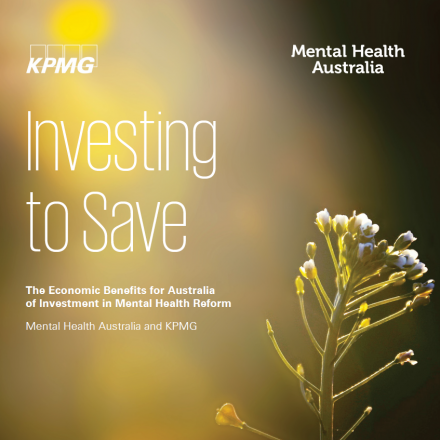Why Australia needs a National Strategy on Prevention of Mental Disorders
 Article by Anthony Jorm, Centre for Mental Health, Melbourne School of Population and Global Health, University of Melbourne
Article by Anthony Jorm, Centre for Mental Health, Melbourne School of Population and Global Health, University of Melbourne
The last two decades have seen a considerable expansion in resources given to treatment and services for mental health problems. Total government expenditure on mental health increased by 178% in real terms between 1992/93 and 2010/11. There have been substantial increases in the size of the mental health workforce, in use of medications and in psychological treatments. Unmet needs reported by consumers have decreased. Yet despite this expansion, it is an uncomfortable fact that there is no evidence for any improvement in the mental health of Australians.
There have been two national surveys and one state survey that have monitored changes in mental health over this period. None have found any improvement. If anything, there has been a worsening in some sub-groups of the population.
However, there is one positive indicator of improvement. Since the late 1990s, the suicide rate in Australia has declined. It is notable that this reduction began at roughly the same time as the start of the National Suicide Prevention Strategy. A major feature of this Strategy is that it focuses on prevention. It supports community-based projects and takes a population health approach rather than a clinical one.
There are two ways of reducing the prevalence of mental health problems. One is to help people get better quicker through treatment. The other is to prevent them developing these problems in the first place. In Australia, we have invested most of the resources in the treatment approach and very little into the prevention approach.
I believe that we need to redress the balance and put more resources into prevention. We need a National Strategy for the Prevention of Mental Disorders that uses similar approaches to those that have been successful with suicide.
Some people are skeptical about whether prevention is possible. However, the evidence from controlled trials is clear that it is possible. There is also a clear economic case for prevention. Prevention needs to be seen as an on-going activity that occurs in all phases of life and in many settings, including families, schools and workplaces.
Fortunately, much of the groundwork for a Strategy has already been done. The Federal Government, working in collaboration with some of the states, has produced a National Mental Health Service Planning Framework. This is a decision aid to allow health planners to make evidence-informed decisions about where to allocate resources. It incorporates the latest evidence on prevention, as well as on services.
Readers who want to know more about this issue can look at my Peter Karmel Lecture in Public Policy which is available online or read my recent editorial in the Australian and New Zealand Journal of Psychiatry.
Readers who want to become involved in advocating for prevention can join the Alliance for the Prevention of Mental Disorders. Membership is free!
__________
Do you have a comment on this story? Join the conversation on Twitter @AUMentalHealth
Article contributed to the newsletter Perspectives - October 2014. Please note that this article is from an individual contributor and does not necessarily reflect the views of Mental Health Australia


 Article by Anthony Jorm,
Article by Anthony Jorm, 

